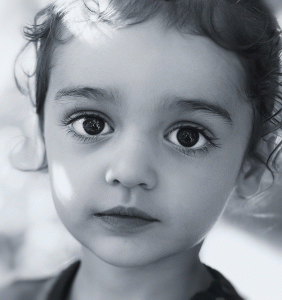Somebody once said, “It is difficult to decide whether growing pains are something teenagers have – or are.” Jokes apart, it is said that almost 2 out of every 5 children have growing pains at some point. Because it is so common, we have seen that other more serious diseases sometimes get missed out because every pain is dismissed off as just a growing pain. So how can you make out?
What are Growth Pains?
To be very honest, no one exactly knows why growth pains occur. It is generally seen in two age groups – when they are between the ages of 3 to 5 and when they are between 8 to 12 years old. It is widely believed that in these age groups, kids’ muscles, tendons and ligaments are all growing rapidly. When some of these body parts grow at slightly different paces, it may result in growing pains. These pains may also be due to all the excess jumping, sprinting and playing that your child’s legs go through during the day. Lack of vitamin D, restless leg syndrome or psychological causes may be responsible for these pains too.
What are typical Growth Pains like?
- Growing pains are typically pains in the muscles, and not bones or joints.
- Growing pains are commonly experienced in the night, early evening or late afternoon.
- These pains are typically felt in the calves, front of the thighs or behind the knees.
What kind of Pains may not be Growing Pains?
- Pains in the joints – elbows, knees, shoulders etc. are more likely to be other serious diseases.
- Growing pains can be felt on both the right and left side. Your son/ daughter may complain of pain in one leg today and in the other tomorrow, or both the legs at once too.
- Growth pains should not be accompanied by anything that is seen on the body – redness, swelling or bruising on a joint. The same goes for a joint that feels warm or is accompanied by fever or rashes or began after an injury.
- Growing pains are usually better with massaging or pressure. If your child winces when you touch the area, you should visit your paediatric orthopaedic doctor.
- Growing pains are not known to be severe enough to cause your child to avoid using his limb or to hold it very still or to wake her up from sound sleep or cause him to be less active than usual.
So if your seven year old daughter is limping due to pain in her left knee in the morning, it may be something more than just growing pain.
What other diseases mimic growing pains?
Here are few conditions that need to be ruled out:
- Juvenile Idiopathic Arthritis can cause symptoms to come and go like growth pains. It is associated with swelling and redness of the joint or a fever or a rash.
- Toxic Synovitis can cause hip pain due to temporary swelling of the inner lining of the hip joint. By itself, this is not a very serious condition.
- Septic Arthritis is a condition which has similar symptoms like toxic synovitis but is a surgical emergency as it can destroy the infected joint if left untreated.
- Bone tumors can cause severe bone pains at night. These may be non-cancerous like osteoid osteoma or may even be cancerous.
What can you do to ease growing pains?
If there is no vitamin deficiency or any other ailment that needs attention, growing pains can be managed at home.
A gentle massage and some tender loving care are usually all that are needed. A warm bath before sleeping or heating pads or even a moist towel that is warmed in the microwave can help. Stretching exercises will ease your child’s growing pains. If required, simple pain killers like Paracetamol may be prescribed by your local doctor.
If you are worried that your child’s ‘growing pains’ may be indicative of something more sinister, do not hesitate to visit a doctor. Dr. Mandar Agashe, Paediatric Orthopaedic Doctor would be happy to have a look at your child’s pains. He can be reached at 022 42435000 or emailed at contactus@agashehospital.com









